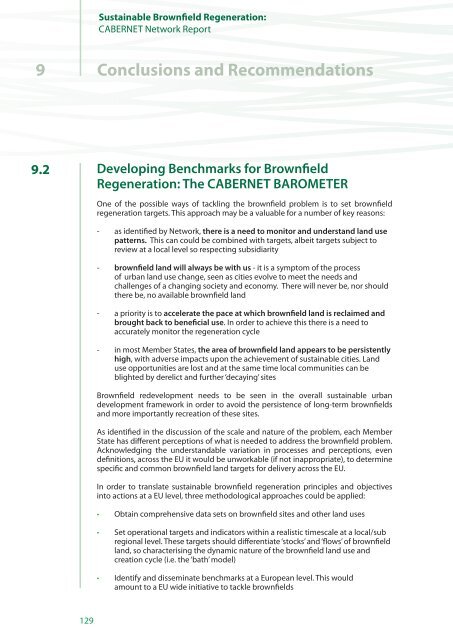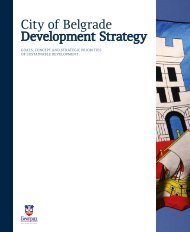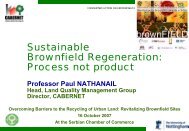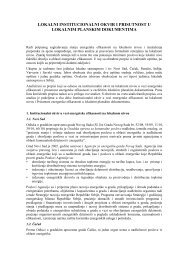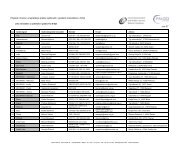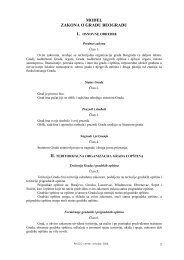Sustainable Brownfield Regeneration: CABERNET Network Report
Sustainable Brownfield Regeneration: CABERNET Network Report
Sustainable Brownfield Regeneration: CABERNET Network Report
You also want an ePaper? Increase the reach of your titles
YUMPU automatically turns print PDFs into web optimized ePapers that Google loves.
<strong>Sustainable</strong> <strong>Brownfield</strong> <strong>Regeneration</strong>:<strong>CABERNET</strong> <strong>Network</strong> <strong>Report</strong>9Conclusions and Recommendations9.2 Developing Benchmarks for <strong>Brownfield</strong><strong>Regeneration</strong>: The <strong>CABERNET</strong> BAROMETEROne of the possible ways of tackling the brownfield problem is to set brownfieldregeneration targets. This approach may be a valuable for a number of key reasons:- as identified by <strong>Network</strong>, there is a need to monitor and understand land usepatterns. This can could be combined with targets, albeit targets subject toreview at a local level so respecting subsidiarity- brownfield land will always be with us - it is a symptom of the processof urban land use change, seen as cities evolve to meet the needs andchallenges of a changing society and economy. There will never be, nor shouldthere be, no available brownfield land- a priority is to accelerate the pace at which brownfield land is reclaimed andbrought back to beneficial use. In order to achieve this there is a need toaccurately monitor the regeneration cycle- in most Member States, the area of brownfield land appears to be persistentlyhigh, with adverse impacts upon the achievement of sustainable cities. Landuse opportunities are lost and at the same time local communities can beblighted by derelict and further ‘decaying’ sites<strong>Brownfield</strong> redevelopment needs to be seen in the overall sustainable urbandevelopment framework in order to avoid the persistence of long-term brownfieldsand more importantly recreation of these sites.As identified in the discussion of the scale and nature of the problem, each MemberState has different perceptions of what is needed to address the brownfield problem.Acknowledging the understandable variation in processes and perceptions, evendefinitions, across the EU it would be unworkable (if not inappropriate), to determinespecific and common brownfield land targets for delivery across the EU.In order to translate sustainable brownfield regeneration principles and objectivesinto actions at a EU level, three methodological approaches could be applied:• Obtain comprehensive data sets on brownfield sites and other land uses• Set operational targets and indicators within a realistic timescale at a local/subregional level. These targets should differentiate ‘stocks’ and ‘flows’ of brownfieldland, so characterising the dynamic nature of the brownfield land use andcreation cycle (i.e. the ‘bath’ model)• Identify and disseminate benchmarks at a European level. This wouldamount to a EU wide initiative to tackle brownfields129


